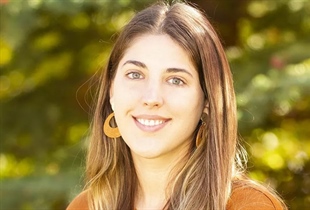Moving the needle on behavioral health in the Vail Valley
Michelle Dibos
Thursday, January 9, 2020

This article first appeared on Vail Daily and was written by Michelle Dibos on December 22nd.
In 2009, when I moved to the Vail Valley permanently from Peru, it felt like a dream come true. The prospect of living in the beautiful mountains of Colorado, with many employment opportunities and endless outdoor and recreation activities to choose from, felt nothing short of thrilling.
People come to this valley in pursuit of a lifestyle that allows balance and time to enjoy all that this little slice of paradise has to offer. Yet, as many who make this move often do, I soon realized that this dream life came with a hefty price tag attached.
There are multiple factors contributing to what is now known as the “paradise paradox.” We’ve all heard one version of this story or another: the high cost of living and widening income gaps, the lack of affordable housing and childcare options, long geographic distances and perilous weather conditions that lead to isolation, and various other issues contribute to increased feelings of stress and hopelessness.
In my case, it was working three jobs to make ends meet while attending college full-time, living thousands of miles away from my family and main support system, and trying to reconcile my own culture with life in America that, unbeknownst to me, slowly drove me into depression.
Despite the magnificent backdrop of life in the Rockies, behavioral health challenges in the Vail Valley are common, and a lack of access to services, compounded by the stigma that surrounds behavioral health, exacerbates the issues further. We are facing a behavioral health crisis.
Fortunately, our community has the momentum to support this cause. There are many amazing organizations and individuals passionately and tirelessly working to transform this broken system. As such, collaboration and coordination amongst them is paramount if we are to make concerted strides.
Eagle Valley Behavioral Health, a nonprofit service created by Vail Health, works in partnership with more than 30 community agencies and organizations to amplify current efforts and address systems-level needs and gaps within our behavioral health system.
We are partnering on several important projects, including:
Behavioral health navigation
Accessing behavioral health services can be a daunting task — knowing where to begin or where to even go for help can feel confusing and overwhelming, not to mention figuring out insurance coverage or lack thereof. EVBH has partnered with the Katz Amsterdam Charitable Fund and the Eagle County Community Paramedics to establish community-based behavioral health navigation services. These navigators will work in partnership with several agencies in the community that have been identified as “entry-points” to ensure people have someone to help them walk through the maze of accessing care.
School-based clinicians
The number of youth who struggle with behavioral health issues creeps higher each year, with a disturbing 23 percent of seventh and eighth graders having seriously considered suicide in 2017. Since they spend a large portion of their day at school, school-based services are essential to meet the needs of our youth.
EVBH has partnered with Eagle County Public Health, Eagle County School District and Hope Center to increase the number of behavioral health clinicians located in the schools. We started the 2019-2020 school year with nine new clinicians hired and aim to secure additional funding to increase this number by eight until we reach one clinician in every elementary, middle and high school in the Valley.
Master of social work scholarships
Eagle County has only 50 percent of the recommended licensed behavioral health providers per-capita compared to Colorado. While we’ve made some strides in the past few months to increase the workforce, EVBH continues to recognize this as a critical need, particularly when it comes to bilingual, Spanish-speaking providers.
We have partnered with My Future Pathways and Denver University’s Graduate School of Social Work to support local youth who are seeking to obtain their Master of Social Work. This partnership supports youth so they can stay in their community as they pursue higher education, secure internships within their fields and obtain employment. It also helps us get closer to our goal of increasing provider access and capacity by growing the workforce and prioritizing bilingual students who can help fill a dire need for Spanish-speaking providers.
Hispanic/Latinx initiatives
About 30 percent of the population in Eagle County and 52 percent of the students in our school district identify as Hispanic/Latinx. Yet, there are only four bilingual licensed behavioral health providers in our valley. EVBH is working to increase access to bilingual services by bringing interpretation services both through contracts and online solutions.
However, knowing that non-clinical, peer-based approaches have been demonstrated to work better for Latinx populations, we understand that this will not be enough to bridge the gap. As such, EVBH is partnering with local Latinx-led and Latinx-serving organizations, such as the Hearts Reign, Neighborhood Navigators and MIRA, to bring culturally relevant services and programs to this population. Programs include the Promotores de Salud Mental program, peer-to-peer support groups, and connecting events within neighborhoods to address isolation and social capital.
These are a few examples of the work EVBH is supporting to help transform the system of behavioral health. Collaborative partnerships are at the heart and center of this work, and we are thankful for the community partnerships. We won’t be able to move the needle without them. It takes a valley.
Michelle Dibos is the community engagement director for Eagle Valley Behavioral Health. For more information on Eagle Valley Behavioral Health, visit https://www.eaglevalleybh.org/.